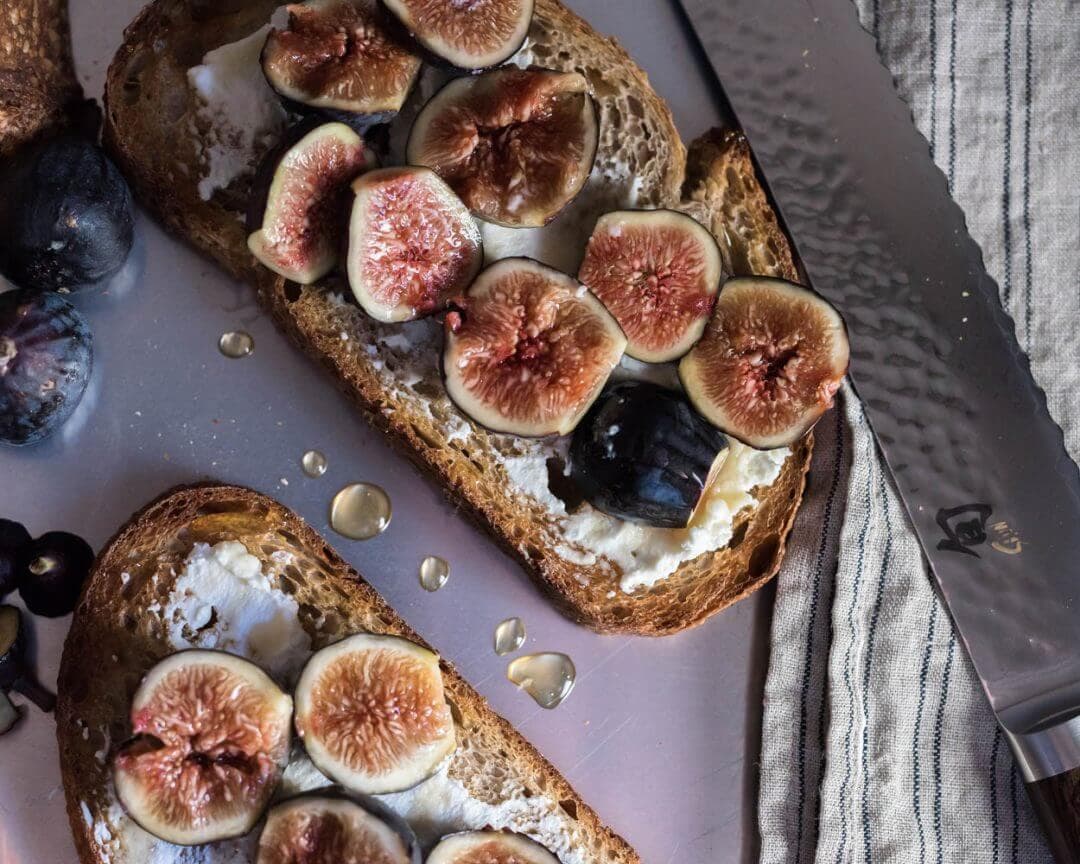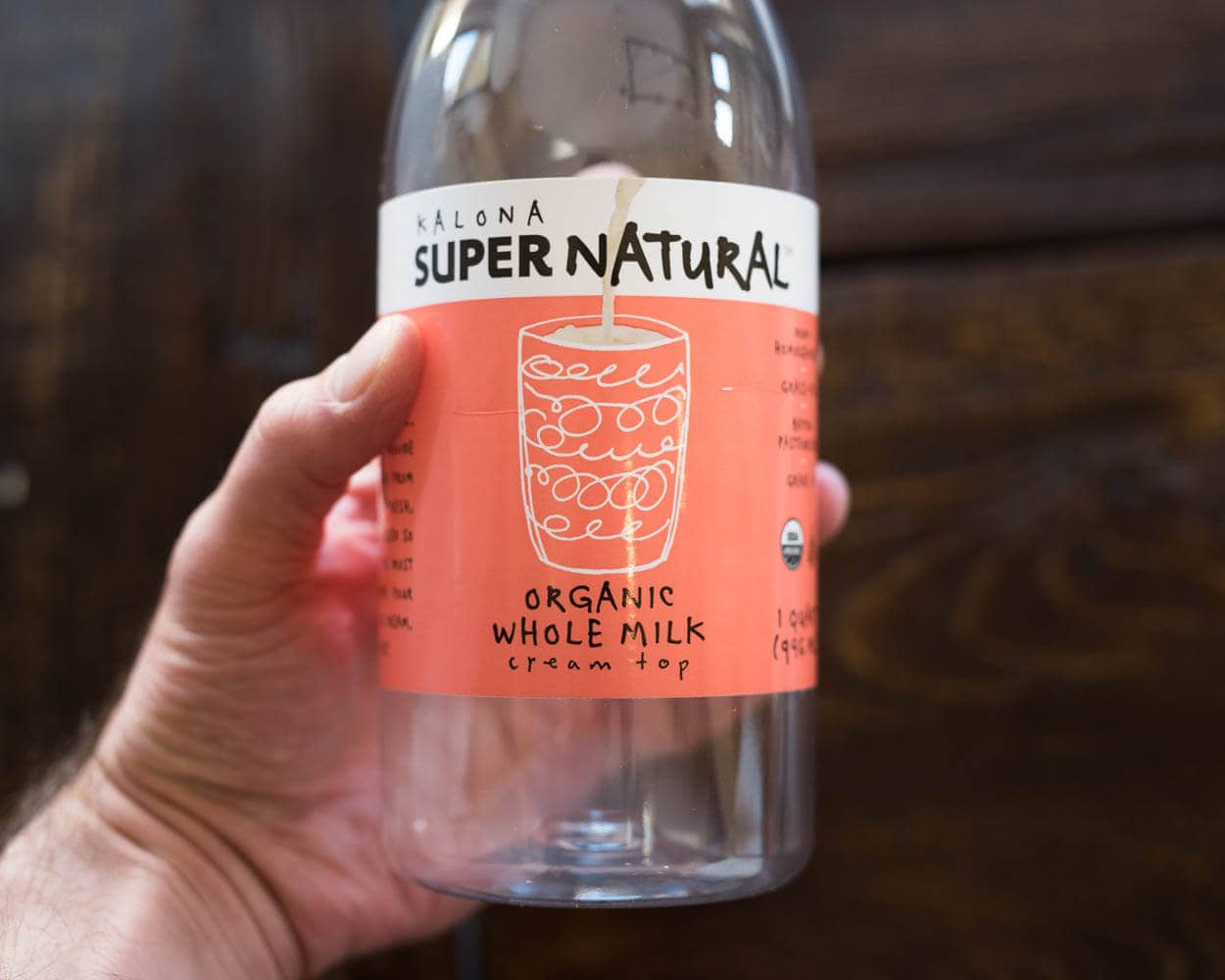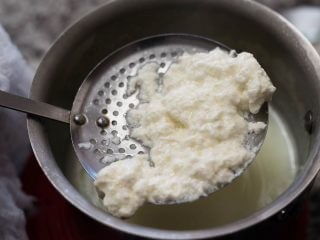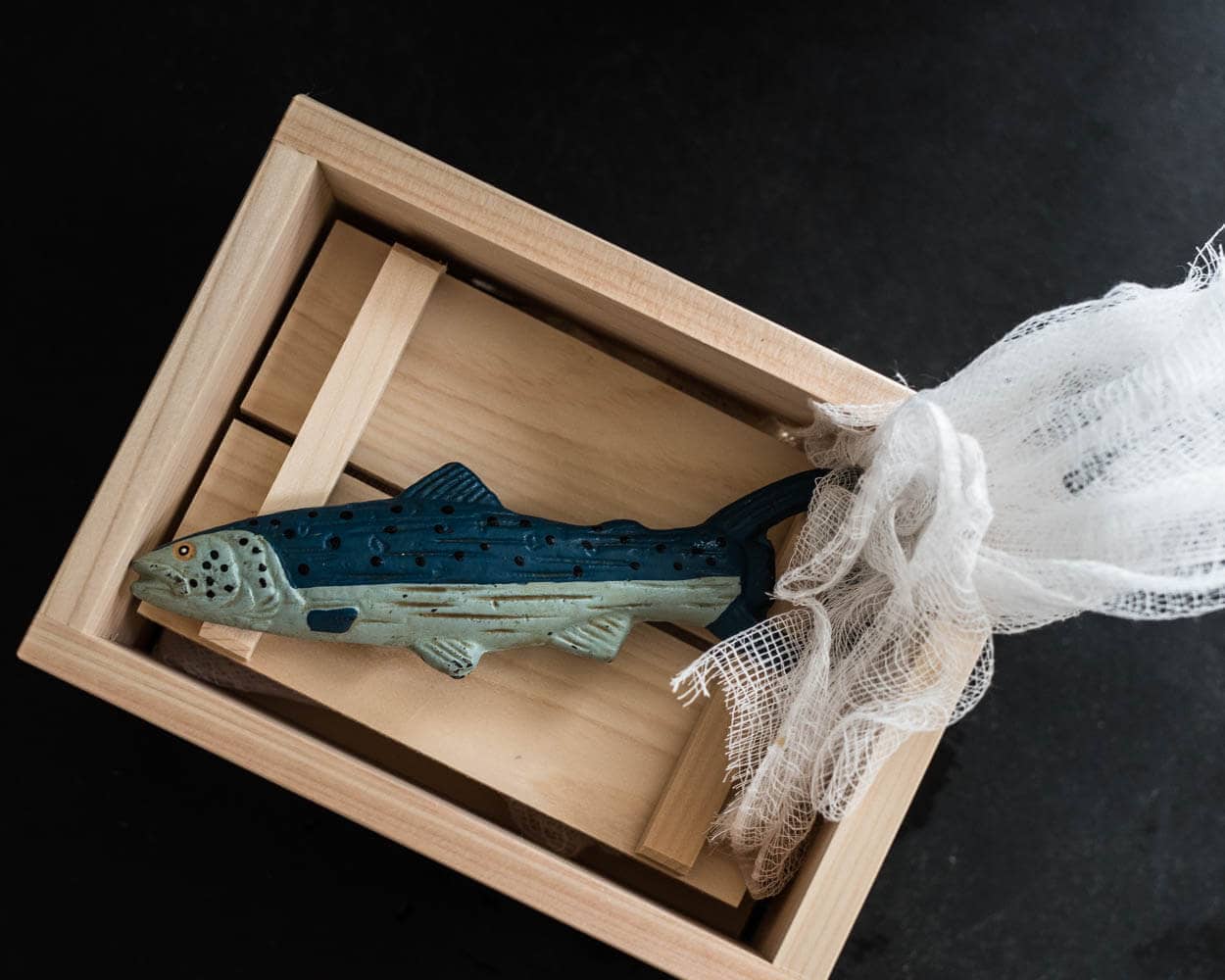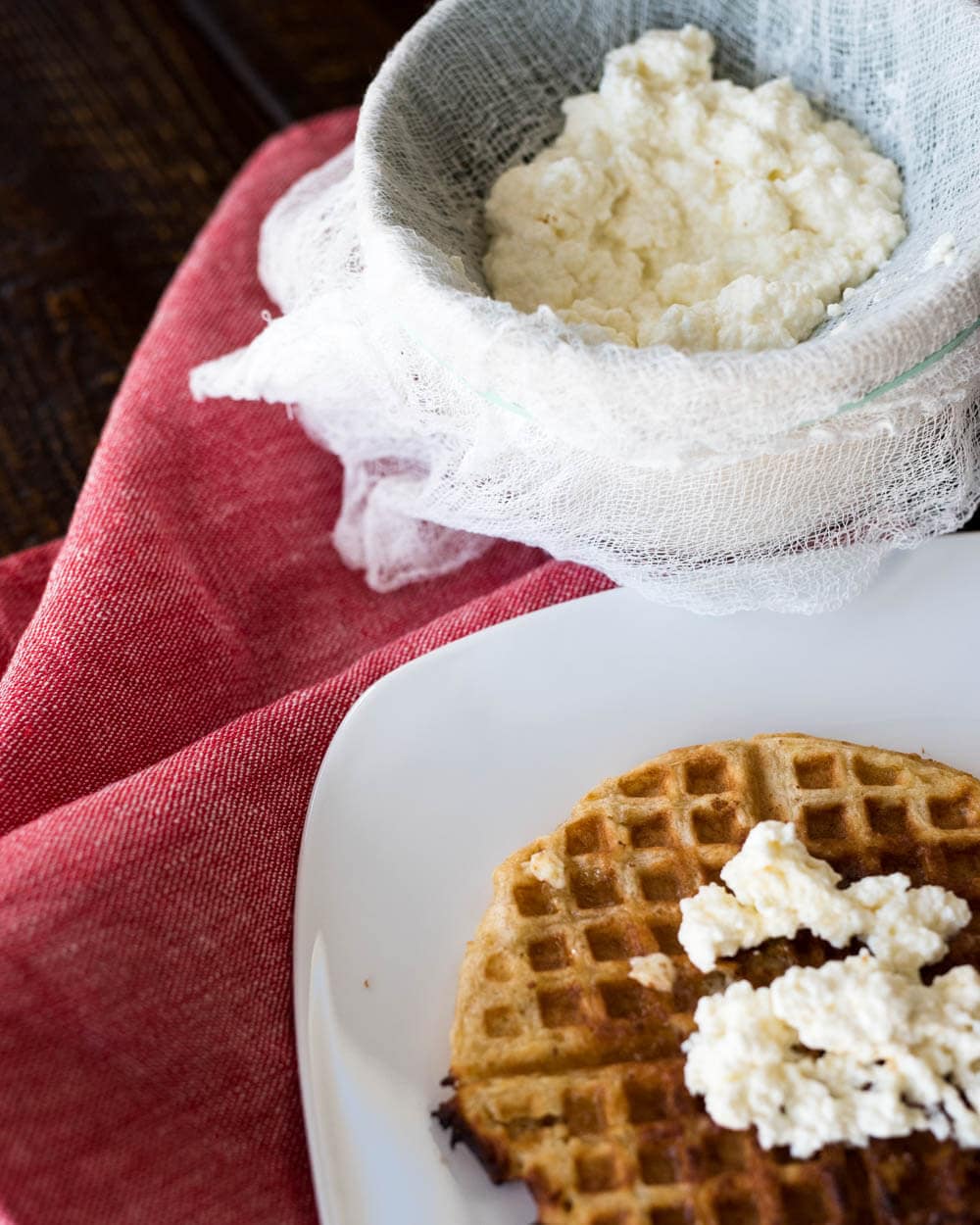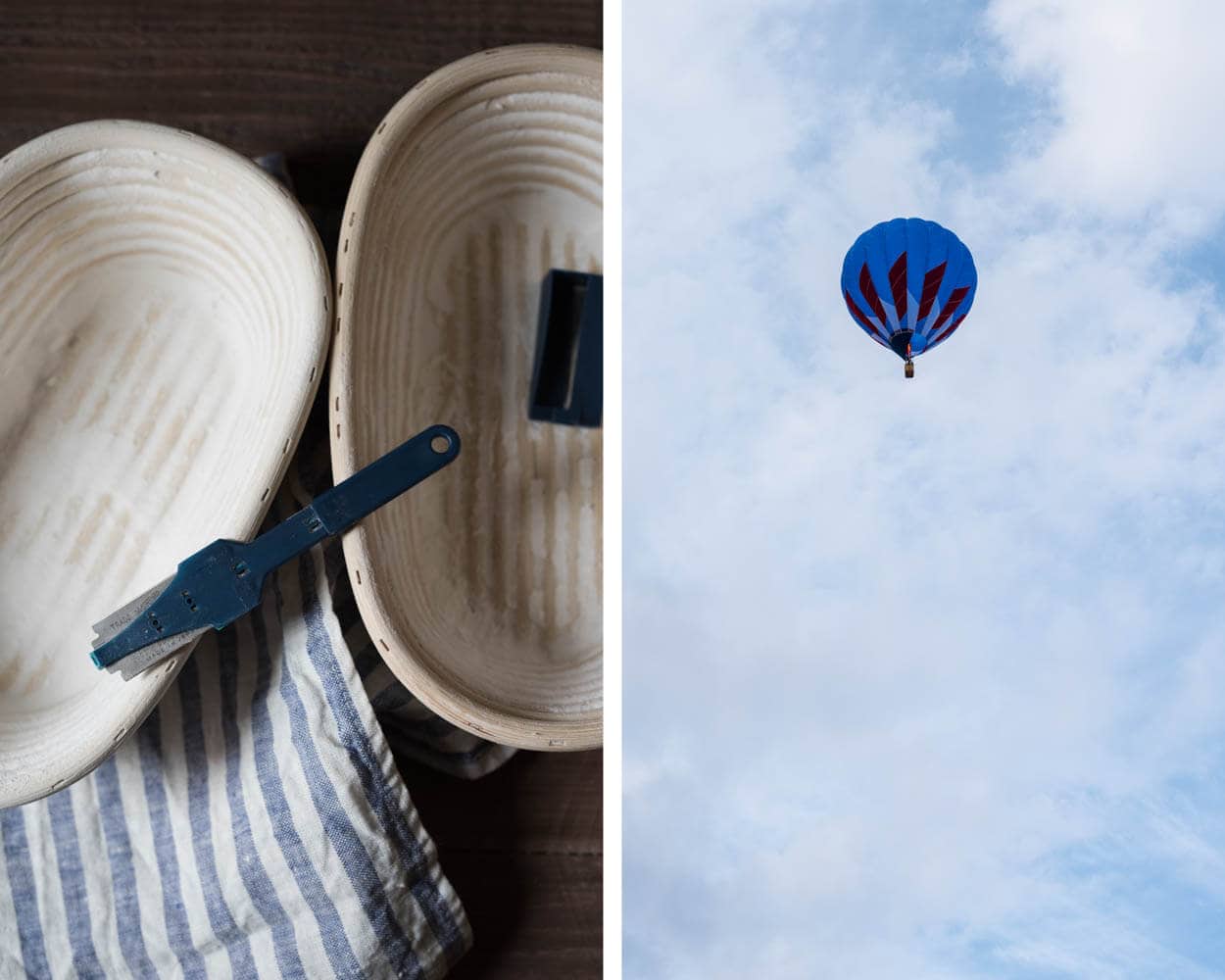This entry is a short interlude that doesn’t contain a bread formula, but rather, an accompaniment to just about any of the loaves baked here. I’ve experimented with how to make ricotta cheese at home, and once I did, I ate it on just about everything: my whole wheat sourdough, my sourdough waffles, and my go-to white sourdough formula. Ricotta is incredibly versatile. You can find recipes abound, but as I’ve recently discovered, it tastes far superior to store-bought options when freshly made at home with high-quality milk.
It was the Albuquerque International Balloon Fiesta here a couple of weeks ago, and it was the perfect weekend for me to make this recipe. I used to attend the fiesta each year, but as it is when you grow up somewhere, you rarely visit the sights around, opting for places far and wide—anywhere but home. The fiesta is a pretty big deal here in Albuquerque; the unique terrain of the city makes for the perfect conditions to launch and fly balloons. The vast Sandia Mountains and low valley create a sort of “box” that keeps balloons in the area for longer, before finally drifting away. Couple that with cold, crisp mornings around this time of the year, and you have ideal flying conditions. The shot below was taken from my backyard one chilly morning as the balloons ascended and drifted away.
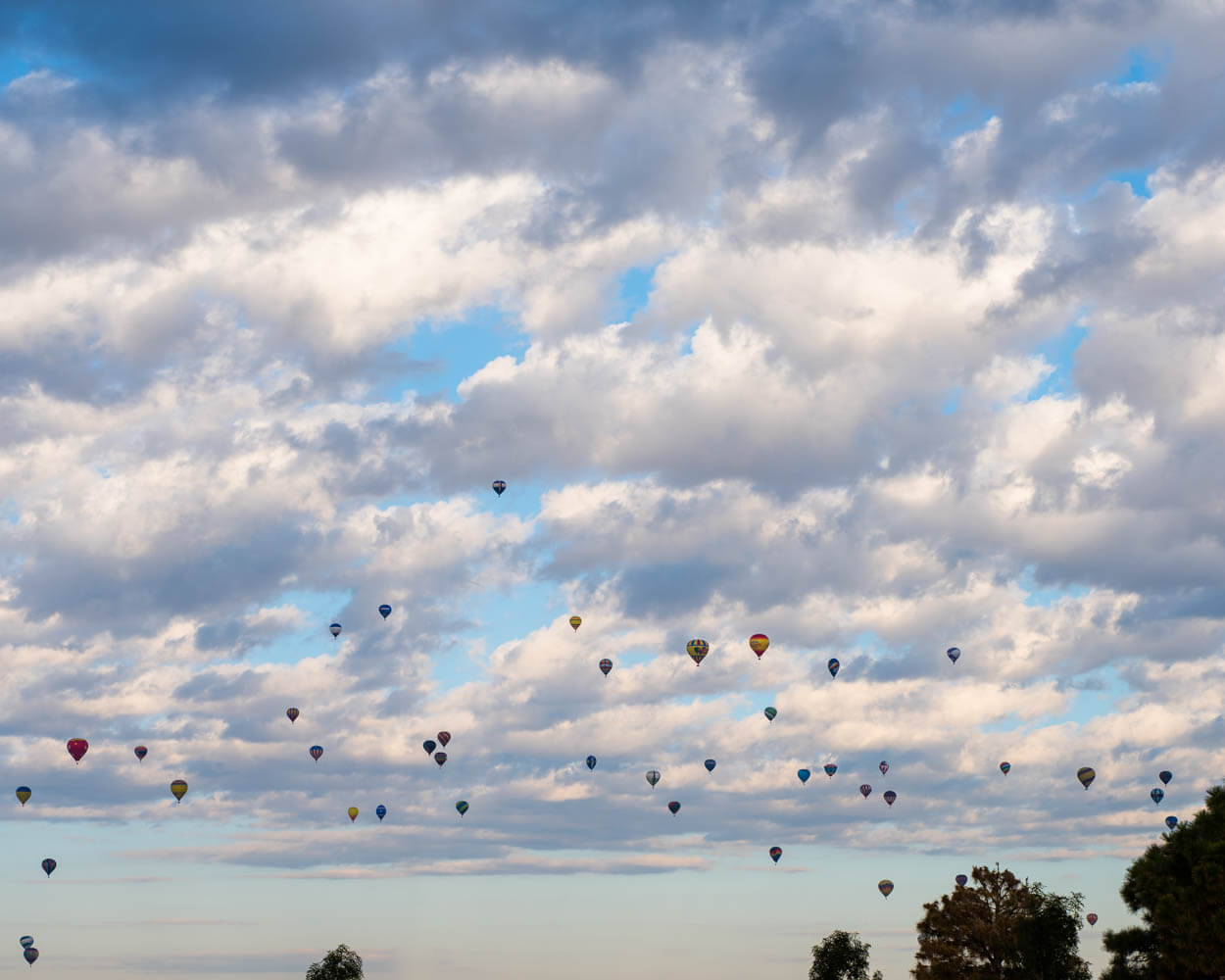
I have no excuse for why I haven’t made ricotta at home until now, and it just might become a weekend ritual. The recipe is so easy, and it requires only a few things in your pantry, it makes me wonder why you’d ever had to repurchase this at the market. If you decide to make pancakes or waffles one morning out of the blue, it only takes about 15-20 minutes to whip up a batch of ricotta and be ready to serve it warm.
The following recipe is based on Alice Waters’ ricotta recipe found in her excellent book, My Pantry. I reduced the amount of salt by about 1/4 TSP (originally 3/4 TSP) as it was a bit on the salty side for my taste. Her recipe takes up only three-quarters of a page in her book– that’s how easy this is. I think the key to making good ricotta is, naturally, using good quality milk (if you have access, fresh local milk is best).
Milk Selection
Alice Waters recommends using milk that is not ultra-pasteurized (UHT) as a result just won’t come out correctly. It should be easy to find whole milk (even organic) at your local market that is not UHT, and I’ve tried this recipe now with a few different types. The latest attempt was using Kalona organic “batch pasteurized” whole milk, and the result was the best so far. Next to finding locally produced milk I’ve enjoyed this brand the most out of the options at my market (you can find this milk at Whole Foods). This milk is not the only batch pasteurized, but it’s also non-homogenized, meaning it will have the label “cream on top.” Essentially this means the fat in the milk is not distributed evenly throughout the liquid.
So what’s the difference between UHT and batch pasteurized? UHT milk is heated to a high temperature, about 280°F (135°C), and then rapidly cooled. Through this process enzymes, vitamins, and some proteins are destroyed, rendering it unusable for making cheese. Batch pasteurized, also called vat pasteurized, is heated to a lower temperature, but heated for longer, preserving more enzymes, vitamins, and proteins and thereby making it more suitable for making ricotta. Chances are if you are buying batch pasteurized milk it will be fresh and organic, which is excellent.
Low-temperature pasteurization, also called vat or batch pasteurization, is one of several acceptable ways to pasteurize milk, a process used to kill harmful pathogens.
Berkeley Wellness
I haven’t tried making ricotta with UHT milk just yet, but I’d be interested to see if it works. Has anyone tried this? If you’ve attempted this, I’d love to hear about it below in the comments section!
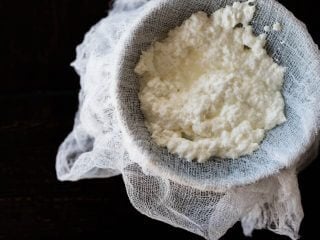
How To Make Ricotta Cheese
- Author: Maurizio
- Prep Time: 5 minutes
- Cook Time: 15 minutes
- Total Time: 20 minutes
- Yield: 1 1/5 cups
Description
Ricotta is something I’ve had my entire life and is a staple in an Italian household. It’s a cheese usually made from high-quality cow milk and goes well with bread and can be used in sweets as well.
It’s incredibly easy to make at home with just a few minutes at the stove!
Ingredients
- 4 cups whole milk, batch pasteurized, cream on top (avoid ultra-pasteurized)
- 1 1/2 tablespoons distilled white vinegar
- 1/2 teaspoon sea salt
Instructions
- Heat the milk in a saucepan until it reaches 190ºF (stir occasionally to prevent scorching)
- Pour in vinegar and lightly stir, until the temperature rises back up to 190°F (87°C). If you do not see any white curd chunks forming add in more vinegar, 1/2 TSP at a time until you do
- Turn off heat & leave for 10 minutes untouched
- Place some cheesecloth over a bowl and gently ladle in the chunky curds from a saucepan
- Slowly stir salt into chunks resting on cheesecloth
Notes
A one-quart bottle of milk will make approximately 1.5 cups of ricotta. The liquid that’s leftover from this, whey, can be used in many other ways including baking sourdough. See my polenta and rosemary sourdough which uses the whey to make polenta!
If you’re making this for a large group of people, go with 2 quarts of milk and use a larger saucepan, doubling the other ingredients. One and a half cups of ricotta will disappear faster than you think.
If you want your ricotta more firm, leave it to drain thoroughly in the cheesecloth, and further, you can use a cheese mold or as I’ve done here, a tofu press with a weight on top. Place the mold on a dish and let sit in the fridge for a day or so.
My iconic fish, an incredibly heavy cast iron bottle opener I’ve had for just about ever, stepped in to help gravity do its job.
The tofu press I have is a nice one, made entirely from wood and if you ever find yourself eating tofu, this is the one to get. I think I’ve used it to make ricotta more often than tofu, but hey, I am Italian after all.
This ricotta will last about four days in the fridge. We ate the entire batch warm, right from the stove, on top of my freshly made sourdough waffles. We placed a dollop or two of the ricotta on top of the waffles after a good slathering of butter and then topped it all off with some light maple syrup. The warm cheese went exceptionally well with the slightly-sour crisp waffles, and I would say perhaps a few blueberries would have taken it even further.
But this cheese doesn’t just stop at waffles. Use it to top any sourdough bread right after it’s been toasted, then add some fresh figs, and finish with a drizzle of honey.
How to Make Ricotta Cheese Wrap-up
I’ve eaten ricotta my entire life, and some of the best while traveling out in Italy, but when you learn how to make ricotta cheese you find just how remarkably easy it is to make. It tastes so staggeringly good it’s a mystery to me I’ve not tried making this at home before. This homemade ricotta cheese goes well with almost every bread recipe found here, especially with hearty whole wheat loaves and those with walnuts or other seeds added.
At this point, I’ve been inspired by so many of Alice Waters’ recipes and writings I need to buy her a spritz and have a nice long chat over some fresh cheese and sourdough. Until that date, I’ll have to settle with reading her excellent books on cooking and her methodologies for applying seasonal and fresh food to our cooking lineup — perhaps more importantly, though, is my attempt to use as many of her recipes on or with fresh sourdough bread as possible.
Cin cin!
If you use this recipe, tag @maurizio on Instagram so I can take a look!


